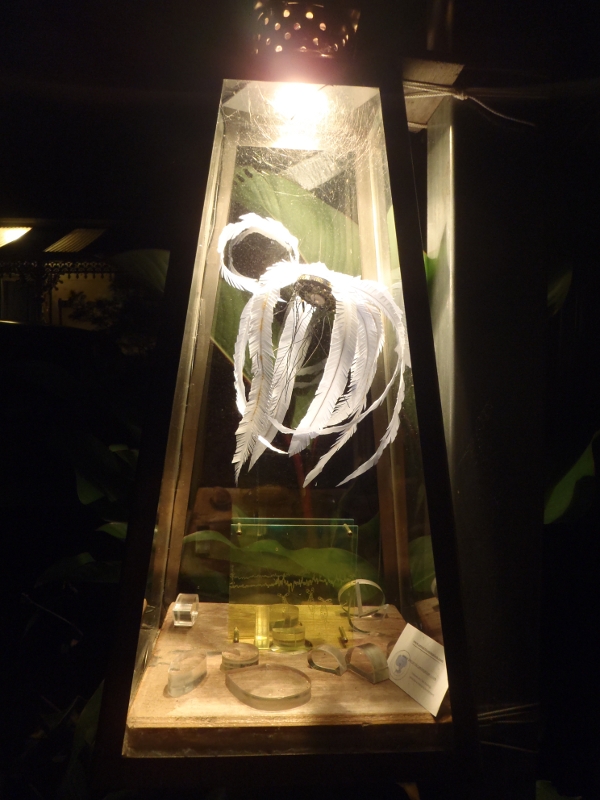Antarctic Thesaurus
a
b
![]() d
e
f
g
h
i
j
k
l
m
n
o
p
q
r
s
t
u
v
w
x
y
z
d
e
f
g
h
i
j
k
l
m
n
o
p
q
r
s
t
u
v
w
x
y
z
cartography changed changeover Casey coccolithophorid connectivity convergence crevasse crinoid
crinoid

Lisa Roberts Constable Memorial Crinoid
Prism art space, Sydney 2011
This model was inspired by a scientist's description of crinoids dancing on the Antarctic sea floor.
Crinoids, also known as sea lilies or feather-stars, are marine animals that make up the class Crinoidea of the echinoderms (phylum Echinodermata). Crinoidea comes from the Greek word krinon, "a lily", and eidos, "form". [1] They live both in shallow water and in depths as great as 6,000 meters.[citation needed]
Crinoids are characterized by a mouth on the top surface that is surrounded by feeding arms. They have a U-shaped gut, and their anus is located next to the mouth. Although the basic echinoderm pattern of fivefold symmetry can be recognized, most crinoids have many more than five arms. Crinoids usually have a stem used to attach themselves to a substrate, but many live attached only as juveniles and become free-swimming as adults.
There are only a few hundred known modern forms, but crinoids were much more numerous both in species and numbers in the past. Some thick limestone beds dating to the mid- to late-Paleozoic are almost entirely made up of disarticulated crinoid fragments.
Wikipedia On-line Accessed 1 Feb 2011








